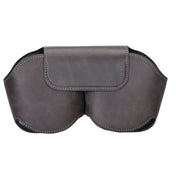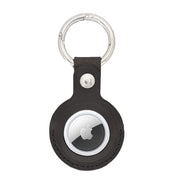Leather is often regarded as one of the evidence of human resourcefulness and ingenuity. Apart from the fact that this material has played an essential role in the advancement of human civilization, it is also known to have recorded 25% part of clothing. According to researches, there is no era in which leather is not used as a design and fashion.
Leather, like other materials in the world, has an interesting and antiquated history. Leather making is one oldest human operations. When compared to silk, wool, or cotton, leather has a very long history. For instance, while silk production began in 3000 BCE, wool began in 10,000 BEC, and cotton began in 5000 BCE. Meanwhile, leather making has been in practice for more than 7000 years.
During the classical period, our early ancestors hunt an animal for food to survive. The skin extracted from the animal was the use to make cloth for protection, footwear for smooth movement, and crude tents for shelters. Although our ancestor gives more attention to the food they get from these animals rather than the skin, era around 13,000 serves as a period of reformation. During this period, our progenitors began to value animal skins compared to the food by-product. After this period, the man started to find different methods of preserving their animal skins.
Most of the methods used at this time were traditional and were often passed from father to son through many generations. Although there were many methods used by our ancestors, the most important of them is the vegetable tanning. Ancient Hebrew settlers and Egyptians discovered this system by 400 BCE. This method involves drying of the fresh skin in the sun. And is it later soften by pounding in animal brains and fast. Afterward, it is preserved by smoking and salting the skin.
The Greeks discovered the tanning formulas with the use of tree barks and leaves, which are soaked to preserve the leather. The discovery was made around 500 B.C when Greece developed leather making as a great trade. This advancement later spread to Rome, where military weapons such as saddles, harness, and shields as well as clothes and footwear.
Another era in which leather has a significant role in the development of human civilization was during the Middle Ages. During this period, the Arabs were known for the preservation of the art of leather making. For instance, Morocco and Cordovan recorded a high level of turn-out in leather production. Products such as dining chairs became the cover of choice as it is easy to maintain.
With the growth of industrialization in the 18th and 19th centuries, there was a change in the demand for leather from the classic varieties of leather to the modern one as the old vegetable-tanned was not only thick but also hard for the new needs. Therefore, there was a considerable increase for softer, portable footwear with a sleek design. As a result of this, machines that perform unhairing, fleshing, and splitting was developed to meet these new demands.
Later the chrome tanning that requires the use of chemicals was introduced as an alternative for the old vegetable tanning. The development of the use of chromium eliminates all the manufacturing processes that require the use of traditional vegetable tanning. This method makes chemicals that replace all these processes.
Besides using the leather to produce footwear, clothes sandal, bags, military weapons, it is also used for bookbinding as it was popular during the Victorian time. For instance, the leather was used to immortalize Novels of famous authors that include Charles Dickens and Oscar Wilde. Today, the edition which has been immortalized now enjoyed a high level of readers and ratings.
In our world today, leather continues to play a significant role in marine applications, aviation, automotive as well as in commercial and residential furniture. The aesthetics and uniqueness of leathers have been dramatically enhanced by the sophisticated and chemical methods of producing them. Hardly can you find any home without a piece of furniture or material made from leather. Thus, leather making has contributed immensely to the advancement of human civilization, and it would continue to be essential in daily human life as there has been no replacement for the benefits derived from leather!



